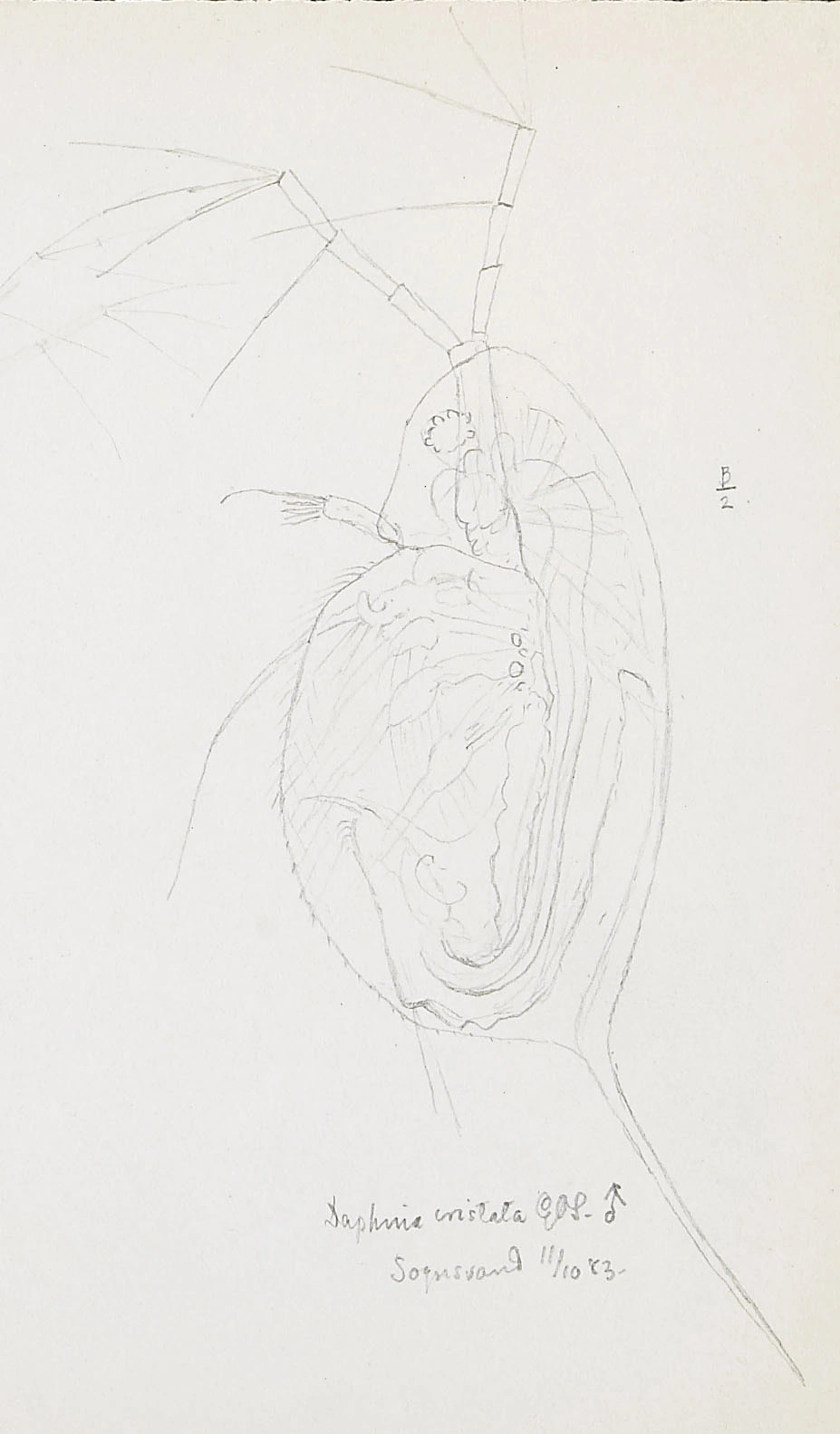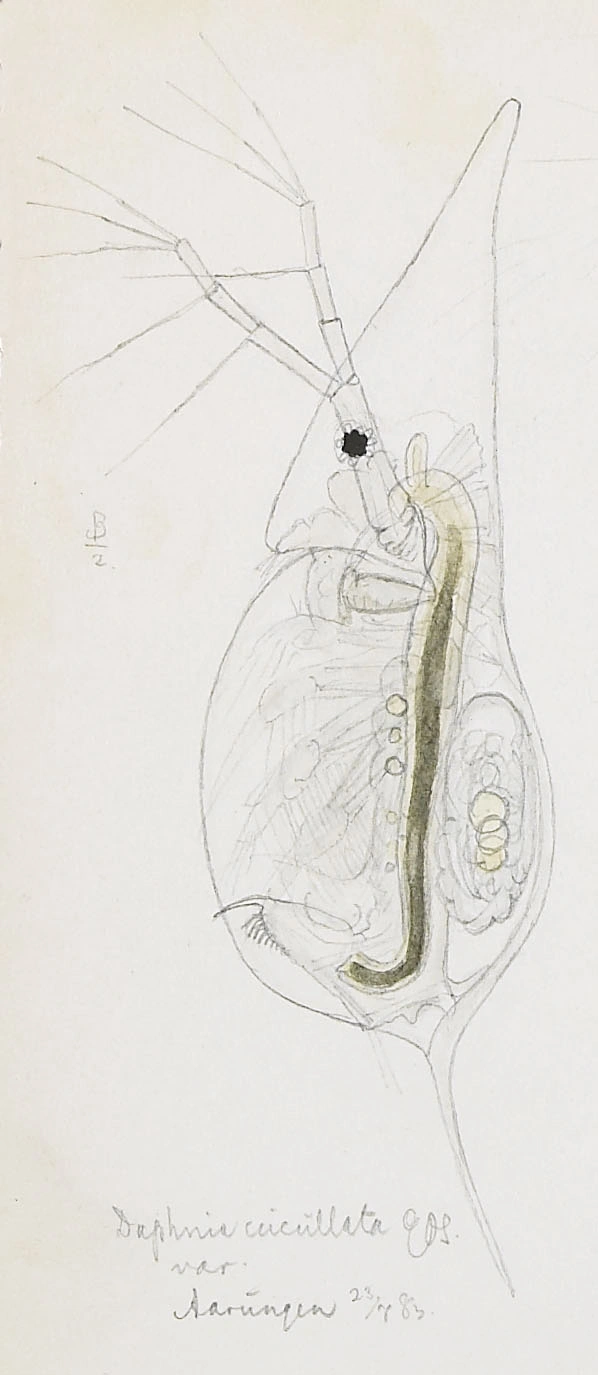Daphnia cristata
Daphnia cristata is easily separated from other daphnids since the bristle on the first joint of the three-segmented-branch of the second pair of antennae lacks. Though it is widely distributed in Norway, it is most common in the Southeast.
Key characteristics
Daphnia cristata (female)
Daphnia cristata (male)
Though it may vary in size, Daphnia cristata is one of the smallest daphnids. It is characterised by the crista which continues around the whole perimeter of the head, starting from the rostrum. The head is large and makes up about 1/3 of the whole animal which has the greatest across the middle of the carapace. The species is easily separated from other daphnids the bristle on the first joint of the three-segmented-branch of the second pair of antennae lacks. It is rather colourless and transparent.
Female: Length 0.9–1.8 mm
Male: Length 0.6–1.0 mm
Ecology and distribution
Daphnia cristata is found in about 12 % of the localities where plankton has been sampled. The majority of records are from the eastern part of south Norway, but it has also a scattered distribution in the rest of the country including the northernmost part. Though it is found as high as 1244 m a.s.l., it is most commonly found 100-300 m a.s.l. In humic water it is found at pH around 5.0, otherwise most records are from water bodies having pH>5.5 and conductivity >2.0 mS/m. It often occur after liming of lakes.
| Vitenskapelig navn | < 4,5 | 4,5 - 4,9 | 5,0 - 5,4 | 5,5 - 5,9 | 6,0 - 6,4 | 6,5 - 7,0 | 7,0 - 7,4 | > 7,5 |
|---|---|---|---|---|---|---|---|---|
| 0 | 1,4 | 3,5 | 9,8 | 21,2 | 14,7 | 12,6 | 12,4 |
| Vitenskapelig navn | < 1,0 | 1,0 - 1,4 | 1,5 - 1,9 | 2,0 - 2,9 | 3,0 - 3,9 | 4,0 - 4,9 | 5,0 - 6,9 | 7,0 - 9,9 | > 10,0 |
|---|---|---|---|---|---|---|---|---|---|
| 0 | 2,5 | 8 | 10,9 | 10 | 11 | 22,2 | 10,1 | 9,1 |
| Vitenskapelig navn | < 0,01 | 0,01 - 0,09 | 0,1 - 0,9 | 1,0 - 9,9 | 10,0 - 99 | 100 - 999 | > 1000 |
|---|---|---|---|---|---|---|---|
| 0 | 3,1 | 1,5 | 7,1 | 11,6 | 18,7 | 27,2 |
| Vitenskapelig navn | < 100 | 100-299 | 300-499 | 500-699 | 700-999 | >1000 |
|---|---|---|---|---|---|---|
| 12,1 | 23,2 | 13,3 | 5,6 | 3,4 | 0,5 |
Look-alikes
Daphnia cucullata


